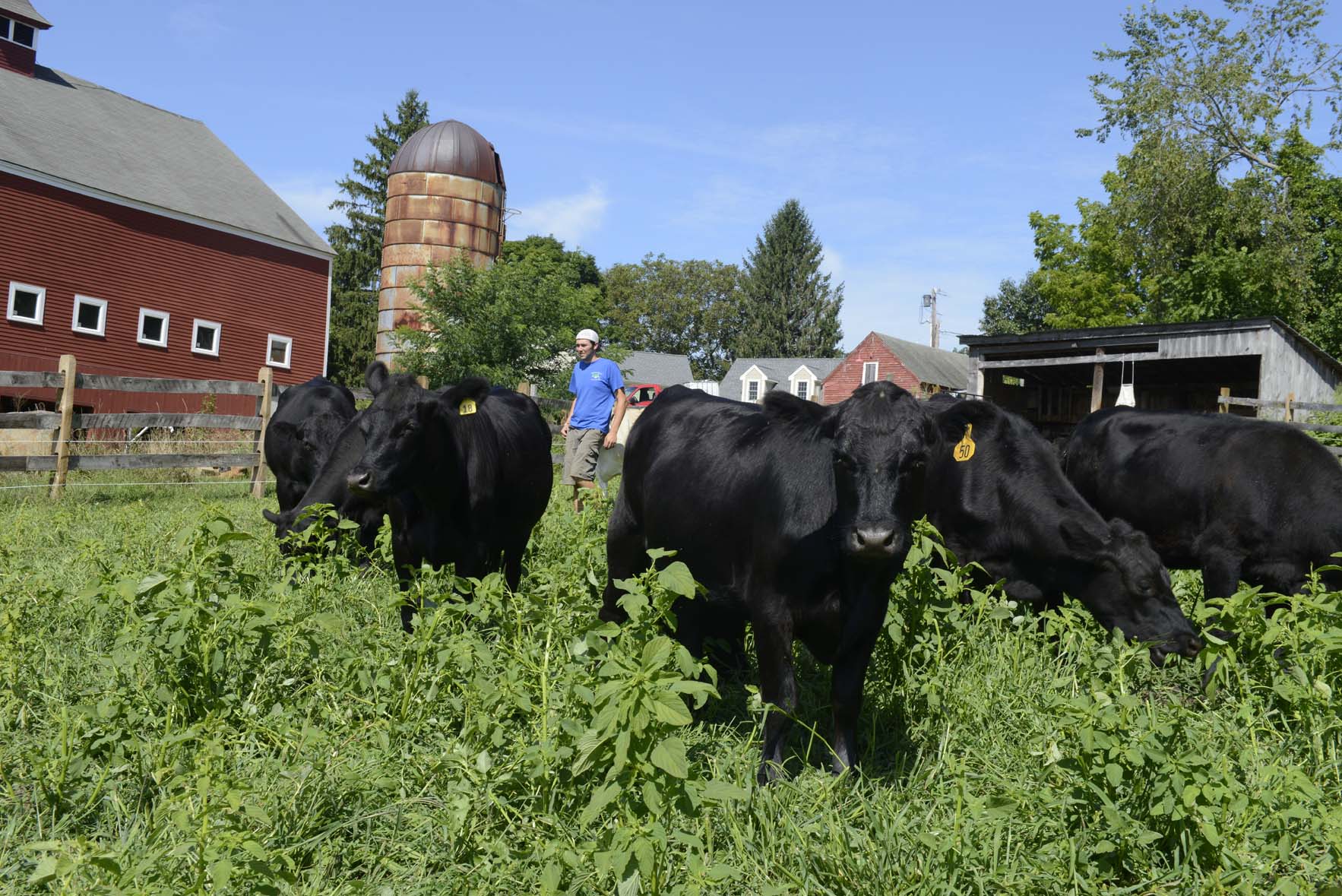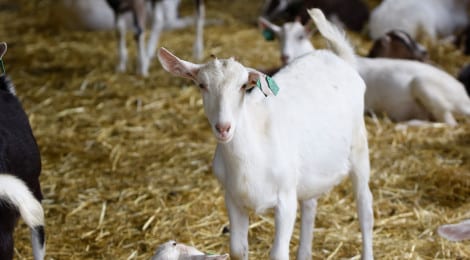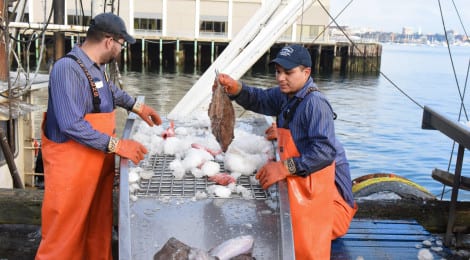
Food Vision Prize Prize Project Update Part 1: Whole Animals for the Whole Region
Farmers that are trying to sell local, antibiotic- and hormone-free beef can have a difficult time. They have to cater to the cuts that consumers want, which are typically tenderloin and sirloin. When you magnify this trend to account for large-scale consumers like college and university food programs, it can create a backlog of less-popular cuts, such a bottom round, brisket, or flank. Farmers need to unload the cuts that consumers are eating less of, and there is only so much ground beef you can sell. The same dynamic is true for pork.
Andy Cox, Director of Dining Services at Smith College, has had his eye on this gap between what farmers produce and what consumers eat since his last job as General Manager for dining services at The Hotchkiss School, an independent boarding school in Connecticut. When the New England Food Vision Prize offered an opportunity to try something new and innovative, Andy – now at Smith – teamed up with Mike Webster, the new General Manager at Hotchkiss, and food program leaders at Westfield State University and Mount Holyoke College to develop a replicable model for upscaling the procurement of whole animals for nose-to-tail utilization in campus dining.
Since winning the prize, the team has come together frequently – in person and virtually – to lay out their game plan. To meet farmers where they are and take advantage of all the animals have to offer, the campuses need to be prepared. They need storage to keep meat that may be produced faster than it can be used. They need to redevelop their menus to ensure they align with available inventory. They need to train staff to recognize less-familiar cuts of meat, integrate them into new recipes, and educate student consumers. But first, they need farmers who want to partner with them.
Currently, this 2018 Prize-winning team is preparing an RFP to release to area farmers who are willing to consider the needs of the campuses, enter into price agreements, and provide whole-animal meat inventory over time. They will also need to partner with a processor and identify storage options, both of which are underway. And they need to prepare diner education efforts to ensure their end users try the new recipes and eventually demand more of them.
If successful, these partners will have developed their own ecosystem to minimize waste, maximize consumption of what is produced, and utilize existing resources and infrastructure to take advantage of the local supply chain, thus increasing the amount of local food that can be found on campus. When large-scale buyers of food can come together and innovate, they can move New England closer to its Food Vision goal.
Farmers that are trying to sell local, antibiotic- and hormone-free beef can have a difficult time. They have to cater to the cuts that consumers want, which are typically tenderloin and sirloin. When you magnify this trend to account for large-scale consumers like college and university food programs, it can create a backlog of less-popular cuts, such a bottom round, brisket, or flank. Farmers need to unload the cuts that consumers are eating less of, and there is only so much ground beef you can sell. The same dynamic is true for pork.
Andy Cox, Director of Dining Services at Smith College, has had his eye on this gap between what farmers produce and what consumers eat since his last job as General Manager for dining services at The Hotchkiss School, an independent boarding school in Connecticut. When the New England Food Vision Prize offered an opportunity to try something new and innovative, Andy – now at Smith – teamed up with Mike Webster, the new General Manager at Hotchkiss, and food program leaders at Westfield State University and Mount Holyoke College to develop a replicable model for upscaling the procurement of whole animals for nose-to-tail utilization in campus dining.
Since winning the prize, the team has come together frequently – in person and virtually – to lay out their game plan. To meet farmers where they are and take advantage of all the animals have to offer, the campuses need to be prepared. They need storage to keep meat that may be produced faster than it can be used. They need to redevelop their menus to ensure they align with available inventory. They need to train staff to recognize less-familiar cuts of meat, integrate them into new recipes, and educate student consumers. But first, they need farmers who want to partner with them.
Currently, this 2018 Prize-winning team is preparing an RFP to release to area farmers who are willing to consider the needs of the campuses, enter into price agreements, and provide whole-animal meat inventory over time. They will also need to partner with a processor and identify storage options, both of which are underway. And they need to prepare diner education efforts to ensure their end users try the new recipes and eventually demand more of them.
If successful, these partners will have developed their own ecosystem to minimize waste, maximize consumption of what is produced, and utilize existing resources and infrastructure to take advantage of the local supply chain, thus increasing the amount of local food that can be found on campus. When large-scale buyers of food can come together and innovate, they can move New England closer to its Food Vision goal.


